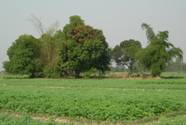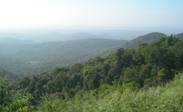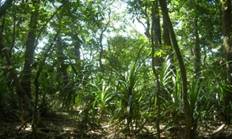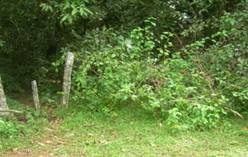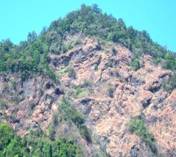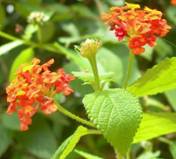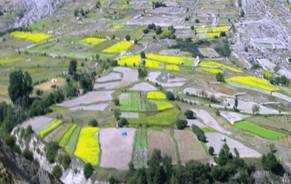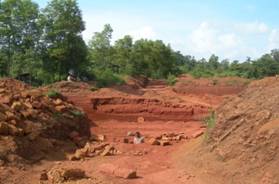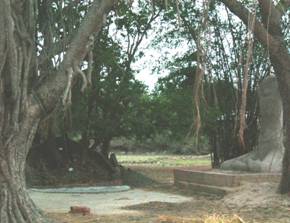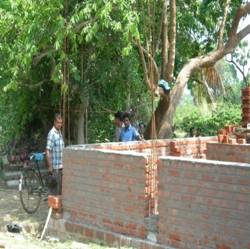 |
Nature worship is an integral part of human society. Going back to historic time period, the tradition was quite evident in every continent as represented in the culture, religion and social norms of traditional societies. Nature worship has various forms, divinity could be assigned to any place or natural elements (eg. stone, rock, mountain, river, jungle etc.) or plant / animals depends on cultural and religious practices of a society. These practices were mostly viewed through socio-religious and anthropological aspects of the societies by the sociologists / anthropologists. The resurgence of worldwide interest in nature worship has increased manifold nowadays mainly due to the realization of importance of these community based practices in nature and natural resource conservation. Sacred Groves, one form of nature worship, are considered as “Sacred Natural Sites” as per the definition provided by IUCN1. In common term, groves are the relic forest patches preserved in the name of religion/culture as observed in many societies. They were reported from many countries extending from Asia, Africa, Europe and Americas but their present occurrence is mostly restricted in Africa and Asia2. In India, Groves are well documented from North-east Himalayan region, Western Ghats, Eastern Ghats, Coastal region, Central Indian Plateau and Western desert3. A diverse range of ecosystem is preserved in grove tradition along with its regional and local identities as represented in name, practices and management of groves.
Indian sacred groves have pre-vedic origin. Most of them are associated with indigenous / tribal communities who mostly believe in divinity of nature and natural resources, therefore distinctly different from icon oriented main stream religions. However, it is not always the religious / cultural issues but some underlying practical experiences may play major role in establishment of the tradition. In Western Ghat region the culture of sacred grove was predominant in agro-pastural communities. The expansion of agriculture and human settlement destroyed vast tracts of forest land which resulted into gradual wash out of fertile top soil, depletion of water resources and loss of local biodiversity which affected their livelihood to great extent. These adverse consequences lead them to realize the importance of forest ecosystem in soil and water conservation as well as livelihood security which ultimately manifested in the form of protection of remaining forest patches under various socio-religious norms4. Sacred grove studies in India so far can be categorized into three time periods based on the aspects researchers and interested peoples covered so far. 1) Prior to 1970 – studies were mostly on social, anthropological aspects, travelogues, forest reports etc. 5,6. 2) 1970’s – 1990’s – inventory, documentation, biodiversity assessment, conservation aspects are predominant in this period along with social issues 7,8 and 3) present thrust is on ecosystem functioning, ecological services and conservation importance 9,10. However, compared to biodiversity and documentation literatures, ecosystem functioning and services are yet to be explored in detail11. The importance of sacred grove in nature conservation has been increased manifold in recent time especially after the declaration of Convention on Biological Diversity (CBD). Community based conservation initiatives are one of the prime agendas for CBD for which sacred grove tradition can be portrayed as role model. The importance of sacred groves in socio-religious life as well as livelihood security has been felt by the indigenous communities from time immemorial which are actually substantiated by numerous local customs, folk lore, social and religious taboos throughout India. However, the gap between these traditional knowledge and scientific understanding related to environmental and ecological importance of the groves still remains wider. Biodiversity in sacred grove Sacred groves are considered as repository of local biodiversity. A good number of studies have conducted throughout India and the volume of literature provides ample evidence for this statement12-14. The restriction in resource usage, undisturbed condition and suitable microclimate are the primary factors for this species richness. Moreover, the natural disturbance, unintentional introduction of new members are also responsible for increasing species diversity15. Studies on sacred grove biodiversity are often prioritized higher groups of flora (i.e. angiosperms) whereas lower group members as well as faunal diversity are underrepresented. There are reports on avifauna, insects, molluscs, reptiles and large mammals but detailed studies are yet to be done16-17. An overview of the floral diversity studies has shown that regional diversity is well represented in grove system, larger groves often have the relic species of the region and there are frequent changes in floral composition due to various external influences18-20. Grove biodiversity is often highlighted because of the prevalence of endemic and rare threatened members in grove biota21.
The high exploitation and declining microclimate outside the grove area restricted their distribution and made them vulnerable to any drastic change in environment. Larger and well maintained groves are often bestowed with good endemic populations compare to smaller, disturbed ones. Similarly, for non timber forest products (NTFPs) groves serve as valuable resource for local communities22. Ecological functions and services Groves are often treated as independent distinct entity for biodiversity conservation and ecosystem functioning. It is true for large undisturbed groves which are self sustainable in many aspects. Water conservation is perhaps the most well documented ecological service provided by the sacred groves. Highland groves (eg. Western Ghats and Himalayan region) are important for their soil and water conservation activities which are beneficial for the local inhabitants in terms of less soil erosion, preventing flash flood, supply of water in lean season etc23-24. In addition to highland areas, even in Rajasthan desert, grove associated water bodies are important livelihood support for local people25. In Karnataka and Kerala, groves are supposed to provide nutrient rich water to the adjacent agricultural fields and spice gardens15. Studies on nutrient cycling and carbon sequestration in north-east region and Himalayas have shown better potential for the groves for these services24,26. Apart from these studies, other services like temperature control, fire resistance, plant-animal interaction are still in their nascent stage. Grove as landscape elements Present day groves are typical representation of islands of native vegetation amidst the heterogeneous landscape. Their role in preserving landscape biodiversity and maintaining ecological services have been discussed in few studies mainly from southern India. Groves act as shelter place for forest birds and small mammals during their foraging activities. Their presence in local landscape along with coffee plantations and forest area promote the regional biodiversity pool to certain extent27-28. Currently studies are undergoing to assess their role in pollination, seed dispersal and carbon sequestration activities. Current Threats to grove system
Present day groves are under various pressures which are mostly human induced. Pressures include fragmentation, area shrinkage and degradation, alien species invasion, grazing, resource extraction etc. Moreover, changes in social structure, resource management also affect grove tradition simultaneously. Perhaps fragmentation is one of the major factors which has been causing the isolation and degradation of groves. Fragmentation stems from population pressure, biomass and agricultural requirement. Once the grove interior is exposed, dry deciduous and light loving members invade the area, thus changing the floral composition as well as microclimate to great extent. These changes facilitate establishment of the invasive species in the grove area and leaving the endemic members on the verge of extinction. The area shrinkage and changes in microclimate affect the faunal members also. Large to medium size animals cannot stay in a small fragment, those smaller ones which can stay, they also have shortage of resources, shelter etc which ultimately putting constraints on normal life cycle. Changing social structure plays an important role in gradual declination of sacred grove system. These nature centric worship places in many areas have already been replaced by temples/solid structures in the name of modernization. Once the god/goddess has been shifted to the temple, the surrounding places become irrelevant to the people, thus immediately converted for other usage. As a result, the local shelter for plants and animals as well as ecosystem functioning has been completely lost. Similarly, once the maintenance of the grove is neglected grove condition becomes vulnerable due to various factors like cattle grazing (affects regeneration), leaf litter and twig collection (affects nutrient cycling and moisture conservation), encroachment for some other purposes etc. Conservation of Sacred grove tradition Sacredgrove portrays a fine example for community based nature conservation without any extra mural support. The current resurgence of interest in the system is mostly due to its invaluable contribution towards conservation of biodiversity and important ecosystem services. International and national bodies have taken various measures to safeguard the grove tradition from the threat of extinction. In India, state forest departments, Non Governmental Organisations (NGOs), village level committees, academics and researchers are working with various aspects as well as are actively involved in grove conservation works. Conservation activities are mainly of three types a) strengthening the existing conservation activities of the villagers and b) restoration of the degraded sacred groves and c) landscape level approach. a) Strengthening the existing conservation activities of the villagers – Villagers with support from forest department, NGOs can protect the groves at their vicinity. Initiatives like prevention of cattle grazing, restriction on manure collection, removal of invasive plants, complete ban on infrastructure development etc. can be taken as a precaution for saving grove biota and ecological activities. Grove conservation activities could be enlisted in the village development programs along with the provision of small incentives to attract the young people. Incentives could be made in the form of carbon credit, ecotourism and for monitoring activities with emphasis on local condition and requirement.
b) Restoration of the degraded sacred groves - However, in both the cases, long term sustainability of the programs is very much dependent on interests /awareness of local community, livelihood benefits as well as proper scientific assessment / monitoring of the conservation activities. c) Landscape level approach Compared to above mentioned methods, landscape approach is wider in spatial scale as well as in application. It requires thorough knowledge on ecological processes going on in grove system and its surroundings, interactions of grove biota and issues of landscape ecology. Contrary to the grove specific conservation agenda, it takes care of grove surroundings which have immense role in grove’s survival. Ecosystem services like pollination, seed dispersal, nutrient cycling and soil and water conservation are usually operated in larger spatial extent combining different land use types at different times and therefore, require an integrated approach at landscape level. Considering the present fragmented conditions of the groves, they can be used as repositories of endemic plants, soil seed bank, connective corridor for birds and animals in human dominated landscapes. Therefore, it requires combined and holistic approach to conserve the grove tradition in landscape level. Conclusion Groves are age old traditional nature conservation practices adopted by the communities throughout the world. Perhaps this is the first democratic approach by the rural people to protect the nature from overexploitation long before the term “democracy” coined. The tradition is again revoked interest nowadays though with completely different perspectives. However, the need of the hour is to aware people about its importance, involve people in its conservation and management and exploring its potential in livelihood improvement. REFERENCE :
|



